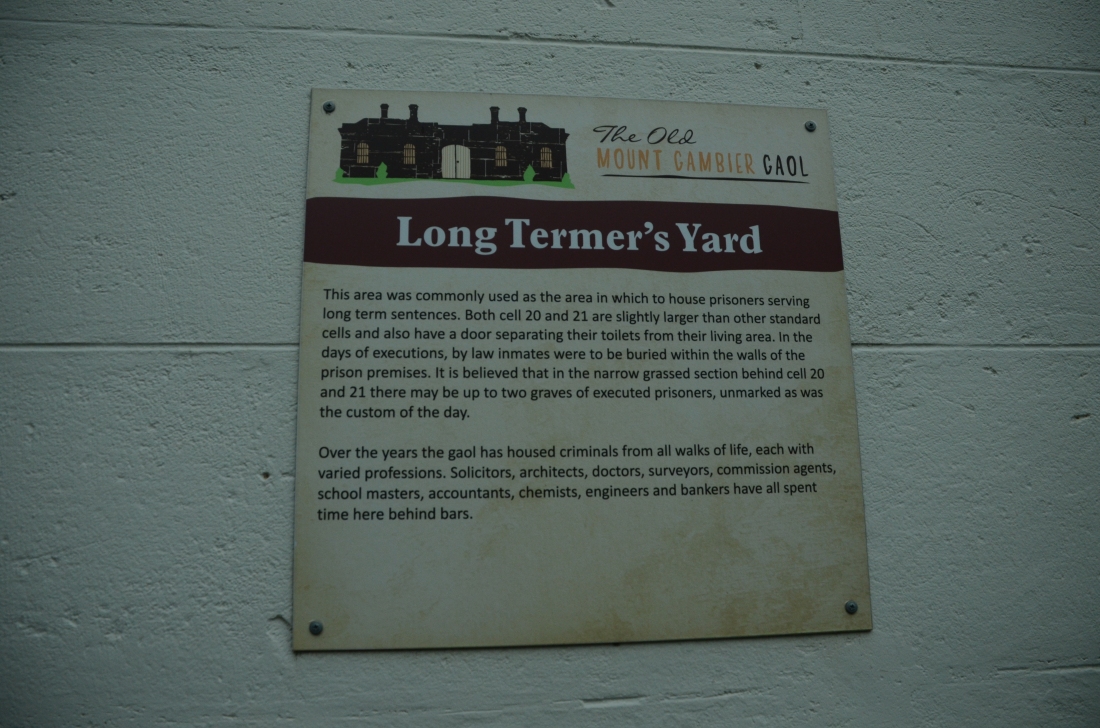I had been a little remiss in organising accommodation for our next leg so was pleased that I was able to get a last-minute deal for a place called the Outrigger Motel in Paihia. Paihia is about 220km north of Auckland on New Zealand’s east coast, and it’s something of a tourist hotspot during the peak summer season but it was getting quieter by the time we arrived in early March.
The motel turned out to be in a perfect spot for us, just a block and a half away from the main pier from which all the marine activities take place. We were booked here for four nights so, on arrival, we planned out our activities for our stay. We wanted to get up to the country’s northernmost point at Cape Reinga. This was another 200km further north than Paihia so we thought it best to book a tour and let someone else do the driving. We also wanted to take the opportunity to dive while we were here before we forget everything we learned when training at Cairns. Luckily, there was a dive shop about 20m from the motel so we decided to walk down and get ourselves organised for the next couple of days.
First stop was Paihia Dive where we were able to get two spots on Friday’s trip. We would be reef diving while some of the other people on the boat would be wreck diving HMNZS Canterbury, a New Zealand Navy frigate that was decommissioned in 2005 and scuttled in the Bay of Islands to serve as a dive wreck in 2007. The top of the ship is at a depth of 19m and, since we’re certified to a maximum depth of 18m, it wasn’t an option for us. We booked ourselves in for two reef dives then moved on to the tourist office on the pier.
The bus trip to Cape Reinga set out the following morning at 8:00am and would include a drive on Ninety Mile Beach (not actually 90 miles long), and sand tobogganing. Also, it would cost NZD 150 each. We decided that this was too expensive for what we wanted and the extra activities were just padding to justify the cost, so we decided to make the trip independently.
So it was that we were up early on Thursday morning and into the car for the drive north. As usual, we made a couple of stops en route at look out spots but didn’t linger, making steady progress towards our destination. Eventually, we arrived at Cape Reinga and took a walk out towards the lighthouse. It was very reminiscent of our visit to the Cape of Good Hope, lighthouse and all.

And there’s no reason why they should be different, since they’re only 5 miles apart, north to south, with Cape Reinga being the more southerly. It surprised me to learn how far south New Zealand is, or how far north the whole of Africa is. I’m not sure which.
We also saw here the two currents meeting each other just like in South Africa, although here it’s the meeting of the Pacific Ocean and the Tasman Sea.
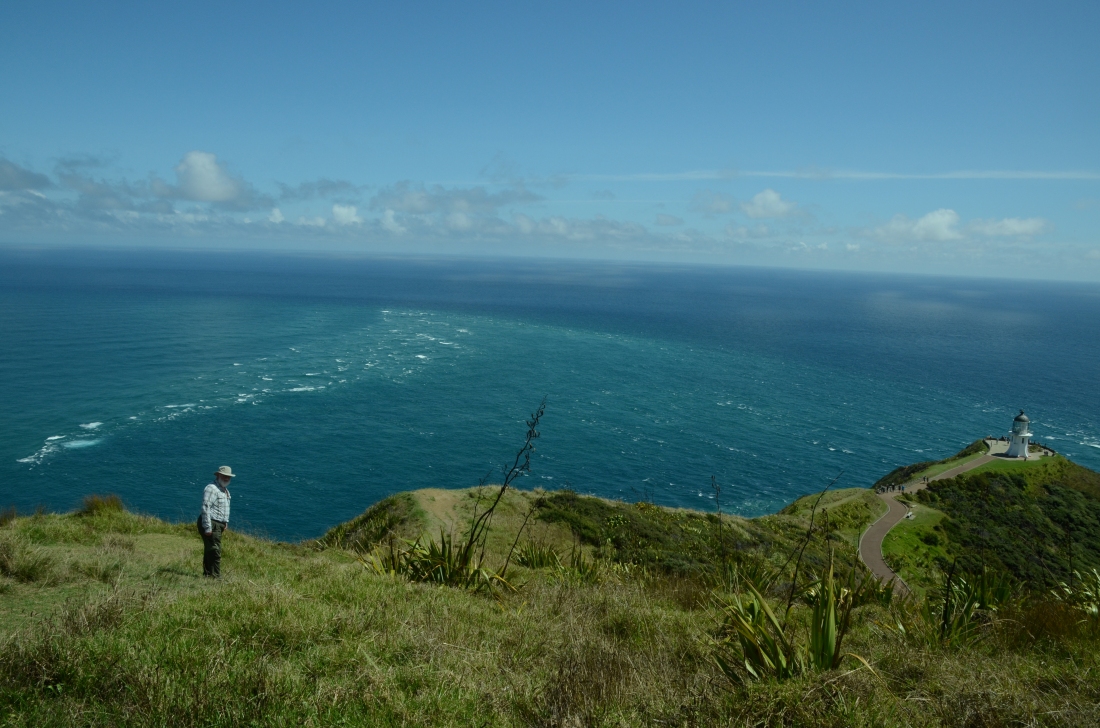
This is also the most spiritual place in New Zealand for the Maori culture. It is the point from which spirits make their last journey after death, over to the islands just offshore before returning to the land of their ancestors.
After our visit, we got back in the car and headed south again. The journey was uneventful, with the one notable point being a stop for ice cream which was made by crushing frozen fruit into the ice cream and forcing it out of a Mr. Whippy type of ice cream machine. I had pineapple and Ishbel had boysenberry, both of which were delicious. I would recommend the place but it was just a roadside hut and I have no idea where it was. After the long drive we chilled out in the evening, knowing we had an early start for the dive the following day.
We were due at the dive shop by 07:45 to get fitted for the necessary gear then made our way down to our boat, The Sentinel. There were about 12 divers with two-thirds of them doing the wreck dive and the other four of us doing the reef. There were also two snorkelers and a honeymoon couple from New York doing a discover diving course. We anchored over the wreck first. If you’re doing more than one dive in a day, it’s important that each subsequent dive is scheduled to be less deep than the previous one, due to the build up of nitrogen bubbles in the bloodstream. Consequently, the wreck divers went out first, since they could be going down as deep as 25m.
Once they were gone, the reef divers had the chance to get into our gear. We were going from wearing dive skins (0mm) back in Australia to 7mm wetsuits here in New Zealand. This thickness is recommended for very cold water, but the water was 25°C here, so we declined the offer of a full hood and gloves as well.
Once the wreck divers were back on board, the boat shifted to be closer to the reef in shallower water. They took a quick photo of us just before we got into the water.

I think the divemasters on board – Luke, in this case – take great delight in photobombing the divers. We had a lovely dive at this spot with an abundance of fish around and we also saw two rays: one manta and one sting.
After we were back on board, the boat moved over to an island called Putahataha, where our dive would take us along a reef wall around the tip of the island, and into an underwater cave.

Again, there were a lot of fish around. I particularly enjoyed being accompanied for a while by this little fellow…

…a Sandager’s Wrasse, who swam along beside my head, keeping pace with me. Apparently, they love divers stirring up potential food for them. I suspect he picked me out as being the least elegant of the divers on the trip and therefore most likely to do the maximum amount of stirring up.
I was a little nervous about the cave thing. It’s all very well strolling into a cave at ground level but the underwater element added a little more of a frisson. This may well explain why I got low on air before the others in the group, so I headed back with Divemaster Luke while Ishbel and an American chap called John buddied up and continued their dive. I was back on board and dried off by the time the rest of them got to the surface. Which I was pleased about since both the current and the wind had increased subsequently, which meant the boat had to move before they could let the other divers approach and get out. We moved and anchored and beckoned the divers over. As they were swimming towards us, things got lively again and the boat had to change position once more. Ishbel later told me that she thought we were having a joke at their expense as they all swam to the spot where the boat wasn’t and looked up to see the skipper inviting them over to the new position. We managed to hold that position and get most of them out of the water, but a further shift was required before we finally got everyone on board. After that, we headed back to harbour.
I would comment on Paihia Dive that their rental equipment was better than the stuff we had learned in. Instead of the slip-on shoe integrated fins, they had dive boots and pull on fins which were much more comfortable. Also, the BCD’s had integrated weights, which are a lot more comfortable than the weight belts we used in our training course and make getting out of the water a lot easier. So kudos to those guys.
We got back to the motel and washed off the salt water from ourselves and our gear, then decided on a slow stroll towards dinner. We ate in a nice little place called Alfresco’s where the food was good and the wine was reasonable. We had a bottle of The Landing, which is produced in Russell, right across the bay from Paihia.
We then took a leisurely walk back to the motel. Except we saw a sign announcing live music tonight at the ex-servicemen’s club. The night was still young, so we decided to take a look and see what it had on offer. We arrived and, not all that surprisingly, the live music consisted of a lady singing, a gent on guitar, and a drum machine. They were playing what you would expect them to be playing, Boney M classics, songs that people could line dance to, and the kind of fare you’d expect to hear at most weddings. Except, the lady then took a break from singing leaving the gent to his own devices. I couldn’t help it: I had Ishbel up on the floor and dancing to a range of old rock and roll classics, and some lesser known tunes that I was surprised to hear. Chuck Berry’s Memphis Tennessee, followed by Johnny Cash’s Folsom Prison Blues might have been expected. But I was surprised to hear a version of Big Joe Turner’s classic Flip Flop and Fly. The locals appeared to enjoy my *ahem* uninhibited approach to dance and I was delighted to entertain them.
Sadly, all this fun music delayed our departure and I may have had one beer more than I should have done. Depart, we eventually did and went to bed that night facing the brutal reality that we were booked to go kayaking to Haruru falls the following morning. At least we had a 10am start, so not as bad as it might have been.
We both felt surprisingly chipper the following morning and a nice breakfast had us ready to face the kayaking challenge. We presented ourselves at the boat promptly and our skipper, Ben, set off sharp at 10am. We had waited to see if anyone else showed up but they didn’t so we were in the fortunate position of enjoying a private tour. The boat headed across the bay in front of Paihia and into the Waitangi River where we anchored and ventured into the kayaks. I’d never done this before so had no idea what to expect. The first thing I should have expected was a cold behind, since these things are designed to float low in the water and let in through some little holes in the sides. The good news was that it was a warm, sunny day, so the discomfort wasn’t too bad and the water trapped there warmed up fairly quickly.

Ben seemed content that, between us, Ishbel and I would be able to paddle our kayak from A to B as necessary and off we set. We had a couple of stops en route to the falls, stopping to look at an old, man-made river inlet that had been made by the Maori people to serve as a dry dock. The river is still tidal up until the falls, so the inlet would fill at high water, when they could float in the canoes they wanted to work on, then empty as the tide went out. We also took a look at some mangroves then carried on to the falls.
By this time, I was ready to turn around and head back to the boat. You sit at an odd angle in these kayaks and the paddling was playing merry hell with my much under-used stomach muscles. It was fun, but I’d had enough. Back to the boat we went and safely made it back on board.
We headed back to the harbour and thanked Ben for providing the private tour, then we headed to the motel to dry out a bit. One last dinner on Saturday evening and our Paihia stay was over. Sunday, it was time to head back to Auckland for one last day before saying goodbye to New Zealand.











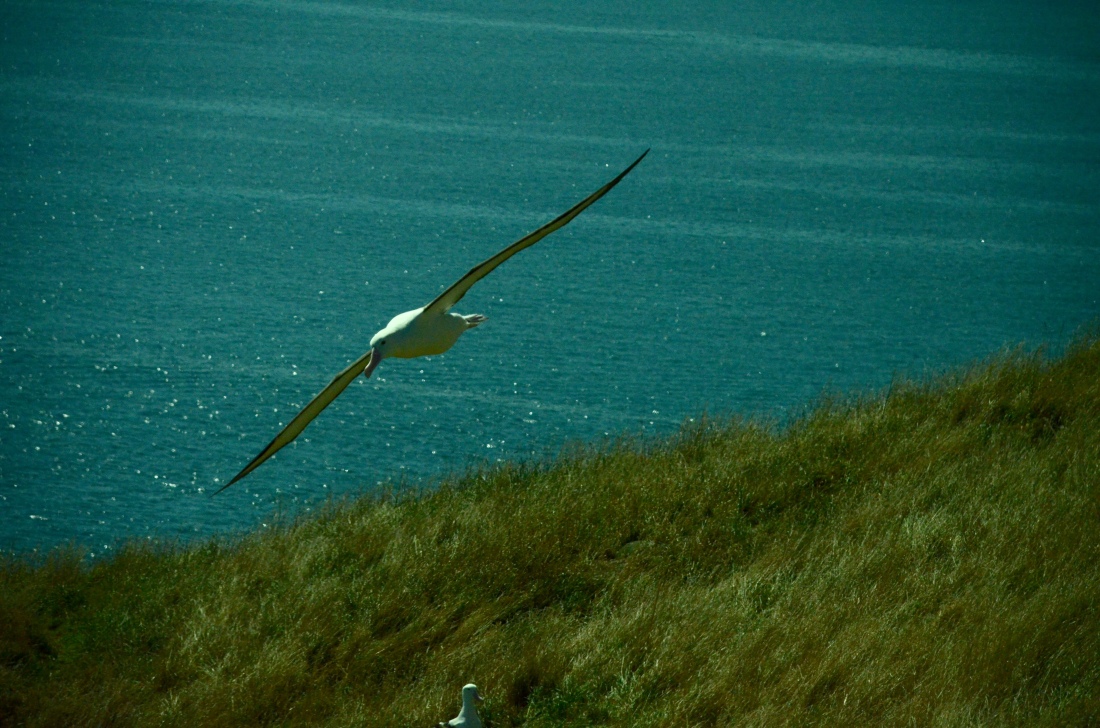














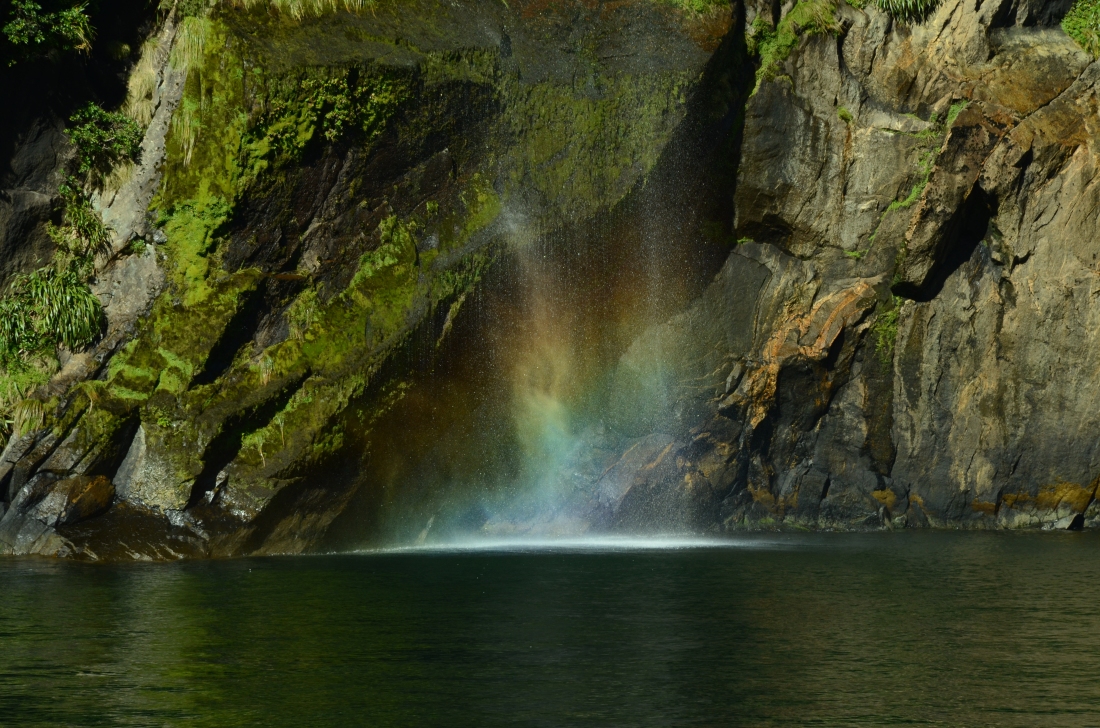

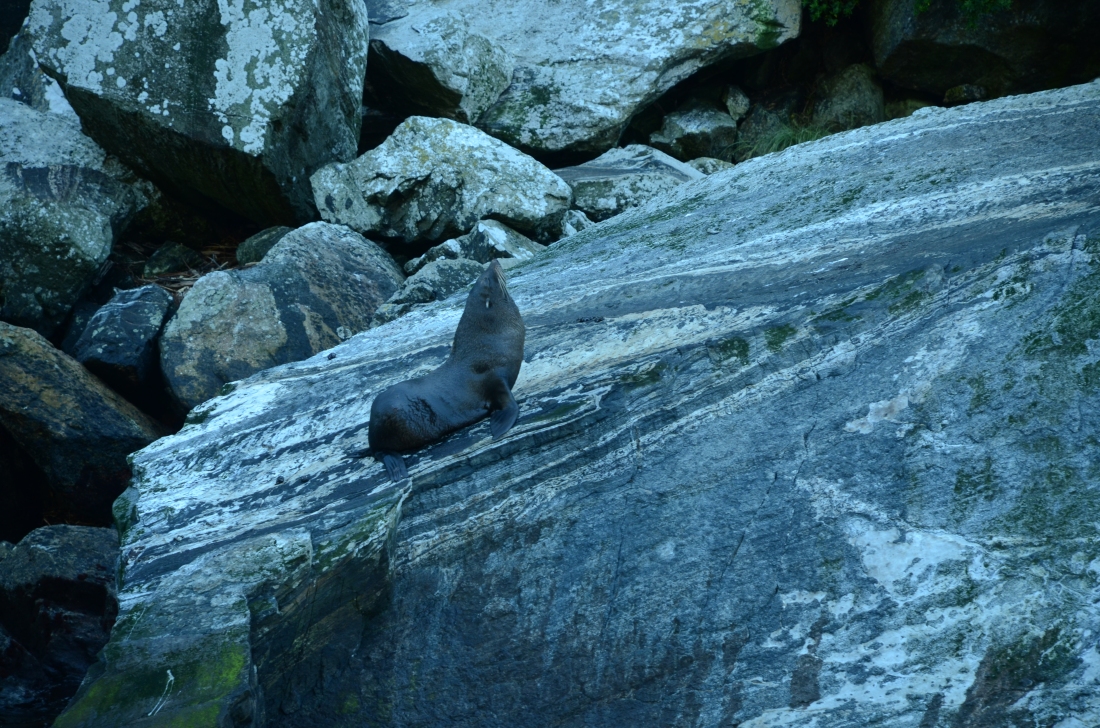






 We had already established that the train had a restaurant car. It was in carriage C, so we were delighted to discover that our seats were at the rear of carriage D. Handy for the cups of tea necessary for a four hour journey.
We had already established that the train had a restaurant car. It was in carriage C, so we were delighted to discover that our seats were at the rear of carriage D. Handy for the cups of tea necessary for a four hour journey.




 By the time we arrived in Hokitika, the sun was shining and it was getting warm. We had a brief stroll around town and did a quick grocery shopping for essential supplies and dinner, then headed out to our AirBnB. This turned out to be a lovely place on the riverbank.
By the time we arrived in Hokitika, the sun was shining and it was getting warm. We had a brief stroll around town and did a quick grocery shopping for essential supplies and dinner, then headed out to our AirBnB. This turned out to be a lovely place on the riverbank.

 We hopped off down by the riverfront just after seeing the damage sustained by St. Paul’s Cathedral.
We hopped off down by the riverfront just after seeing the damage sustained by St. Paul’s Cathedral. It would appear that this particular structure is a long way from being restored to its pre-earthquake splendour.
It would appear that this particular structure is a long way from being restored to its pre-earthquake splendour.













